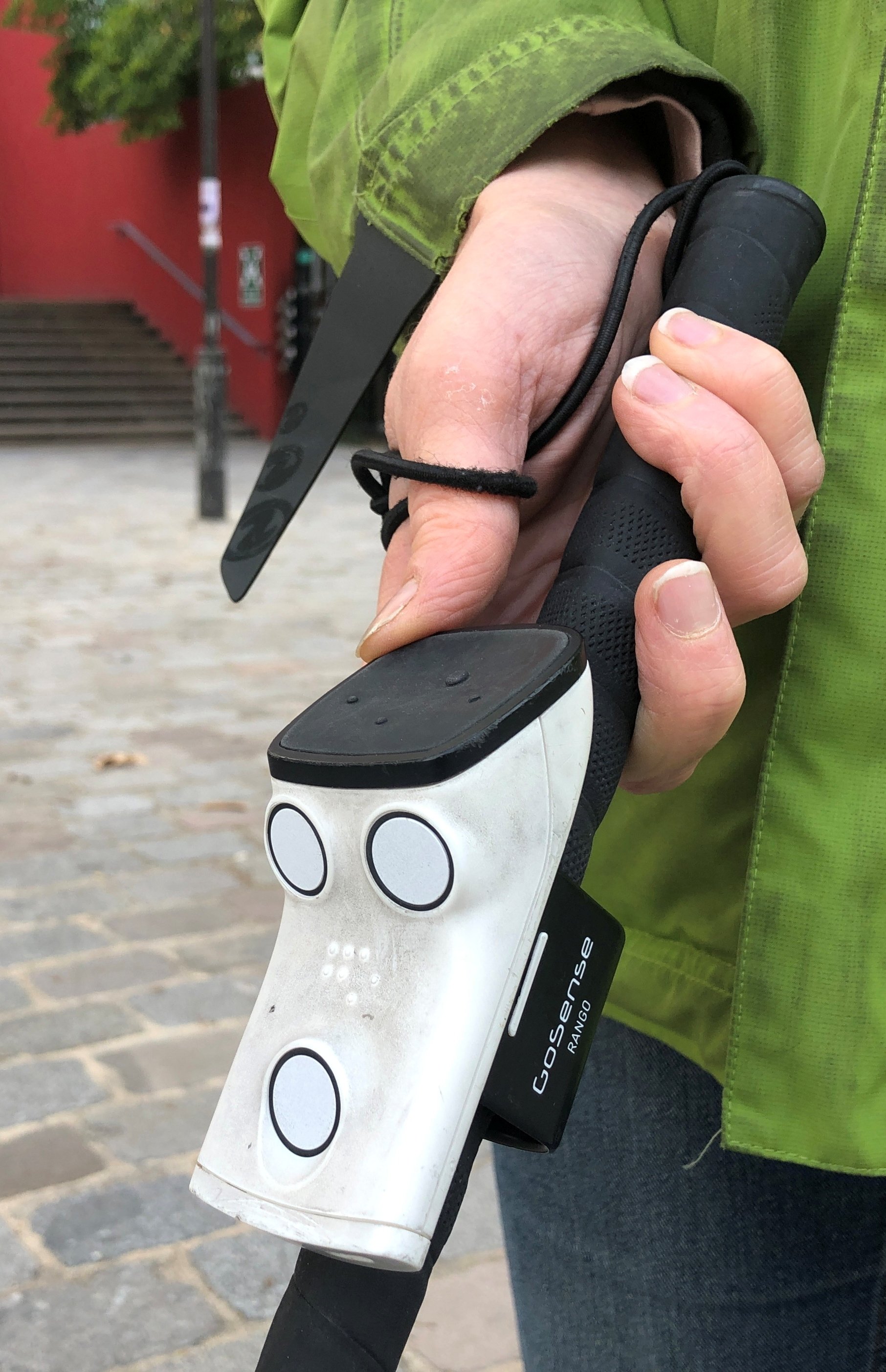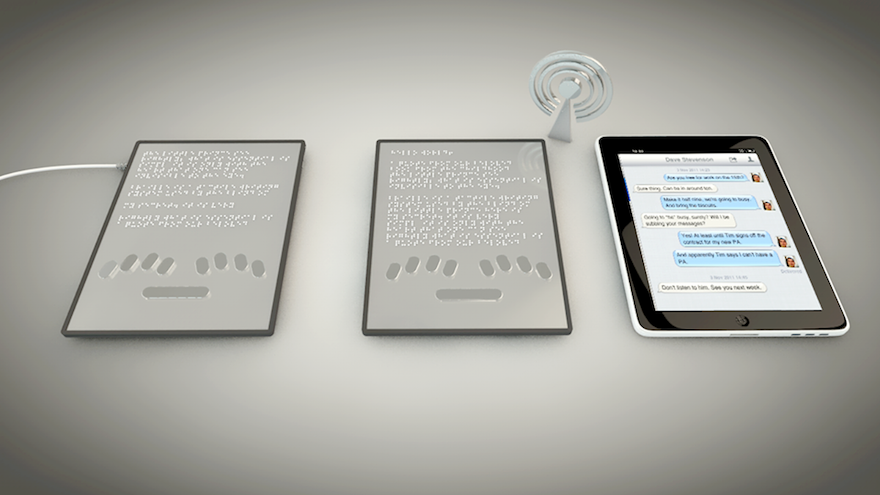Speech-to-Text Devices for Low Vision: Enhancing Ease of Use
Speech-to-Text Devices for Low Vision: Enhancing Ease of Use
Blog Article
Empowering Self-reliance With Assistive Technology for the Blind
The assimilation of assistive modern technology right into the lives of individuals with aesthetic disabilities stands for a significant innovation in advertising freedom and self-sufficiency. From ingenious display viewers to advanced wise walking sticks, these tools not only improve daily navigation and interaction but additionally encourage individuals to involve meaningfully in numerous aspects of life. As we discover the myriad benefits and real-world applications of these technologies, it ends up being vital to analyze the hidden elements that add to their efficiency and the possibility for future advancements in this essential field.
Introduction of Assistive Technology

The advancement of assistive modern technology is grounded in concepts of inclusivity and empowerment. Technologies in software program, equipment, and sensory improvements supply users with options customized to their particular demands. From display visitors that convert message to speech, to tactile devices that convey info via touch, these devices change the method people engage with their environments.
In enhancement to sensible applications, assistive modern technology promotes higher social inclusion and participation in various sectors, consisting of education and learning and employment (Screen readers for the blind). As r & d remain to progress, the potential for assistive innovation to even more enhance the lives of aesthetically impaired individuals remains promising, leading the means for a more equitable culture where everyone can flourish
Types of Assistive Tools
A variety of assistive devices have emerged to support individuals with visual impairments, each made to fulfill certain requirements and boost everyday performance. These devices range from low-tech services to modern technologies, supplying varied alternatives for individuals.
Low-tech tools consist of magnifiers and large-print products that assist in analysis and writing. Braille devices, such as Braille stylus pens and slates, allow responsive reading and interaction. Positioning and flexibility aids, like white canes, help individuals browse their atmosphere securely.
On the greater end of the spectrum, digital magnification systems and screen visitors provide substantial assistance. Electronic magnifiers enable users to increase the size of message and pictures on displays, while display readers transform digital content into synthesized speech, facilitating access to information on smart devices and computers.
Smartphone applications also play a critical duty, giving functions like text recognition and navigating aid. Wearable technology, such as smart glasses furnished with increased reality, is emerging as an appealing device to enhance situational understanding.
Benefits of Assistive Technology
The assimilation of assistive modern technology dramatically enhances the high quality of life for individuals with visual problems. These innovations encourage individuals by promoting self-reliance, allowing them to browse their settings extra efficiently and do everyday tasks with higher simplicity. As an example, screen readers and zoom software enable people to accessibility electronic information, cultivating professional and instructional chances that may have formerly run out reach.
In addition, assistive tools such as smart walking sticks and general practitioners applications offer real-time navigation assistance, boosting mobility and safety and security. This raised freedom not just enhances self-esteem however also motivates social involvement, enabling individuals to take part more fully in their neighborhoods.
Assistive technology additionally helps with communication, aiding customers get in touch with others with voice recognition and text-to-speech applications. This capability is essential for preserving relationships and accessing important check my reference information.
Additionally, the personalization alternatives offered with lots of assistive innovations make sure that users can customize devices to their details demands, further enhancing functionality and performance. Generally, the advantages of assistive technology for individuals with aesthetic problems are extensive, advertising an extra inclusive society where everyone can seek their ambitions and objectives.
Study and Success Stories
Highlighting the transformative effect of assistive technology, countless situation researches illustrate how people with visual disabilities have successfully integrated these tools right into their every day lives. One engaging instance includes a college trainee that used display analysis software to navigate on the internet sources and scholastic products successfully. This technology not just facilitated her education however likewise boosted her confidence in taking part in conversations and team jobs.
Another study includes an expert that employs a smartphone application created for navigation and object recognition. By using this application, he has restored freedom in both his individual and workplace, enabling him to commute separately and engage with associates better.
Additionally, a retired person shared her experience with braille e-readers, which allowed her to access a huge range of literary works and remain gotten in touch with her community with book clubs.
These success stories highlight the important function of assistive technology in cultivating self-reliance, improving top quality of life, and promoting social combination for people with visual problems (Screen readers for the blind). By accepting these innovative devices, users can get rid of obstacles and confiscate opportunities that contribute to their professional and personal fulfillment

Future Trends in Assistive Innovation
Innovation in assistive technology is positioned to redefine the landscape of support for individuals with aesthetic impairments. Arising trends emphasize the combination of expert system (AI) and machine discovering, which boost the performance of gadgets that help with navigation and details availability. AI-driven applications are currently qualified of analyzing aesthetic information in real-time, making it possible for individuals to engage with their Discover More Here atmosphere much more independently.
Additionally, the development of wearable technology is advancing rapidly. Smart glasses geared up with augmented truth (AR) can give audio descriptions of surroundings, transforming exactly how users engage with public rooms. These gadgets not only promote autonomy yet additionally foster social addition.
Furthermore, the Net of Things (IoT) is making homes smarter, permitting for smooth connection in between everyday appliances and assistive gadgets. This connectivity equips users by allowing automatic responses and voice-activated controls customized to specific requirements.
Verdict
In final thought, assistive technology plays a pivotal function in encouraging individuals with visual impairments by boosting their freedom and engagement with their environments. The diverse series of devices and applications readily available not just helps with navigating and interaction however additionally advertises social combination and possibilities for individual and professional growth. As improvements proceed in this area, the capacity for boosting the lifestyle for those with visual problems will expand, promoting better autonomy and empowerment.

Report this page